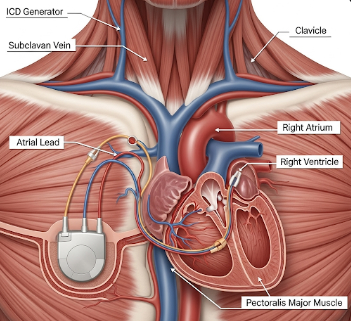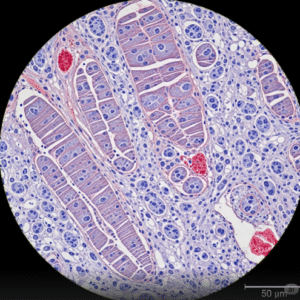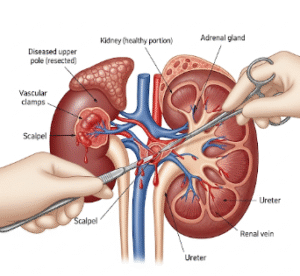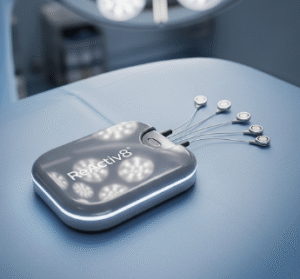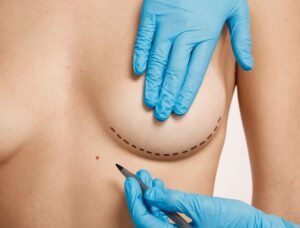Overview
Implantable Cardioverter Defibrillators (ICDs) are advanced electronic devices implanted in patients at risk of sudden cardiac arrest due to life-threatening arrhythmias. These devices continuously monitor the heart’s rhythm and deliver electrical shocks or pacing when abnormal rhythms are detected, effectively saving lives in emergency situations.
South Korea is recognized for its highly advanced cardiology infrastructure, experienced electrophysiologists, and cutting-edge ICD technology, making it a prime destination for patients seeking safe, reliable, and long-term arrhythmia management.
What is an ICD?
An ICD is a small device implanted under the skin near the chest or upper abdomen, connected to the heart via leads that:
- Monitor heart rhythm continuously
- Detect life-threatening arrhythmias like ventricular tachycardia or ventricular fibrillation
- Deliver electrical shocks (defibrillation) or anti-tachycardia pacing to restore normal rhythm
- Provide long-term protection against sudden cardiac death
Indications for ICD implantation include:
- Survivors of sudden cardiac arrest
- Patients with severe cardiomyopathy or heart failure
- High-risk individuals with congenital or genetic arrhythmia syndromes
- Patients with reduced ejection fraction (<35%) despite optimal medical therapy
What are the Benefits?
- Life-saving intervention → Detects and corrects fatal arrhythmias instantly
- Continuous cardiac monitoring → Provides valuable long-term data for physicians
- Reduced risk of sudden cardiac death in high-risk populations
- Minimally invasive implantation → Small incision, short recovery, and low surgical risk
- Enhanced quality of life → Peace of mind for patients and their families
- Expert cardiac care in Korea → High procedural success and advanced device programming
Procedure Details
1) How should I prepare for ICD implantation?
- Preoperative evaluation → ECG, echocardiogram, blood tests, chest X-ray, and cardiac imaging
- Medication review → Blood thinners or heart medications may need adjustment
- Fasting → Typically 6–8 hours before the procedure
- Pre-procedure consultation → Discuss device type, implantation site, anesthesia, and potential risks
- Lifestyle preparation → Avoid smoking, maintain hydration, and follow cardiologist instructions
2) What happens during ICD implantation?
- Anesthesia → Local anesthesia with sedation or general anesthesia if needed
- Patient positioning → Supine on procedure table
- Surgical steps →
- Small incision made near the collarbone
- Leads inserted through a vein into heart chambers
- Leads tested for proper sensing and pacing
- ICD device connected to leads and implanted under the skin
- Incision closed with sutures or adhesive
- Duration → 1–2 hours depending on complexity
- Monitoring → Continuous ECG, blood pressure, and oxygen saturation monitoring
3) What happens after ICD implantation?
- Immediate recovery → Observation for several hours to overnight
- Pain management → Mild analgesics for incision discomfort
- Activity restrictions → Avoid heavy lifting or raising the arm above shoulder for 4–6 weeks
- Device programming → ICD settings tailored to patient’s condition
- Follow-up visits → Device checks, wound healing, and cardiac function monitoring
Risks / Benefits
Risks
- ➤ Infection at implantation site
- ➤ Bleeding, bruising, or hematoma
- ➤ Lead displacement or malfunction
- ➤ Rare heart perforation or arrhythmia induction
- ➤ Inappropriate shocks (rare, manageable via reprogramming)
Benefits
- ➤ Life-saving protection against sudden cardiac death
- ➤ Continuous heart rhythm monitoring
- ➤ Improved quality of life and reassurance
- ➤ Minimally invasive implantation with short recovery
- ➤ High success rate under expert cardiac care in Korea
Recovery and Outlook
- Immediate recovery → Mild soreness at the incision site; monitored in hospital
- Short-term follow-up → Device check, ECG, and chest X-ray within 1–2 weeks
- Return to normal activity → Light activity after a few days; full activity after 4–6 weeks
- Long-term outcomes → Significantly lowers risk of sudden cardiac death and improves survival
- Post-procedure care → Regular device checks, medication adherence, and lifestyle adjustments
- Lifestyle guidance → Avoid strong electromagnetic fields, maintain heart-healthy habits, attend follow-ups
South Korea provides comprehensive post-implantation care, including cardiac rehabilitation, device monitoring, and patient education to ensure optimal long-term outcomes.
When To Call the Doctor
Contact your cardiologist immediately if you notice:
- ⚠️ Fever, redness, or swelling at the incision site
- ⚠️ Severe or worsening chest pain
- ⚠️ Dizziness, fainting, or palpitations
- ⚠️ Unexpected shock from ICD
- ⚠️ Shortness of breath or leg swelling
Best Korea Option / Process
South Korea is a leading destination for ICD implantation due to:
- Expert electrophysiologists and cardiac surgeons
- State-of-the-art electrophysiology labs and device technology
- Comprehensive pre- and post-procedure care
- Minimally invasive implantation with high success and low complication rates
- International patient services → Consultation, translation, coordination, and follow-up
Top Hospitals for ICD in Korea:
- Asan Medical Center, Seoul – Advanced electrophysiology and ICD implantation
- Samsung Medical Center – Expertise in complex arrhythmias and device management
- Seoul National University Hospital (SNUH) – Comprehensive cardiac care and monitoring
- Yonsei Severance Hospital – Multidisciplinary management for high-risk cardiac patients
👉 For patients at risk of life-threatening arrhythmias, ICD implantation in Korea offers a safe, effective, and expertly managed solution with comprehensive follow-up and long-term protection.

